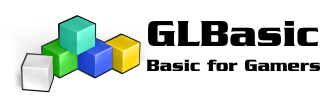I'll put some images in to show what I mean.
Assume this is the initial landscape (it's not, I stole my image from another thread ) - also assume they are just textures and not flat colours. The landscape is a solid mesh where each vertex (tile corner) is (currently) an offset into a texture image that has images of snow, grass, mud etc textures.
) - also assume they are just textures and not flat colours. The landscape is a solid mesh where each vertex (tile corner) is (currently) an offset into a texture image that has images of snow, grass, mud etc textures.

Then you change only some of the tiles textures (again, assume the tile has a texture and not a flat colour). Note that not all the ones that were light blue have changed to purple, only one. Also one that was red is now purple.

Does that make it clearer?
Assume this is the initial landscape (it's not, I stole my image from another thread
 ) - also assume they are just textures and not flat colours. The landscape is a solid mesh where each vertex (tile corner) is (currently) an offset into a texture image that has images of snow, grass, mud etc textures.
) - also assume they are just textures and not flat colours. The landscape is a solid mesh where each vertex (tile corner) is (currently) an offset into a texture image that has images of snow, grass, mud etc textures.
Then you change only some of the tiles textures (again, assume the tile has a texture and not a flat colour). Note that not all the ones that were light blue have changed to purple, only one. Also one that was red is now purple.

Does that make it clearer?



 Great work MrTAToad!!!!
Great work MrTAToad!!!!